Dexcom CGM Adhesive Tips for 10-Day Wear
This is a summary of a clinical article published by clinicians independent from Dexcom based on their knowledge and experience.* Dexcom has not tested these approaches nor do we endorse these specific approaches. For detailed step-by-step instructions on how to use your Dexcom Continuous Glucose Monitoring (CGM) System, please refer to your user guide.
Are you a swimmer, runner, or do you just have trouble with your sensor staying on? These adhesives and professional tips may help. Remember what works best for one person may not work well for everyone. You may need to try several different products or methods to figure out what works best for you.
Liquid Adhesive Agents
Liquid adhesive agents can be used with the CGM sensor adhesive patch1,2. Suggestions when using liquid adhesive agents are to:
- Create an empty oval on the skin with the liquid adhesive product. Let skin adhesive dry. Insert sensor on clean skin in center of oval.
- Or you may also soak the liquid adhesive into tape after placement on your body
Product | Advantages | Professional tips |
No-Sting skin Prep (Smith&Nephew) 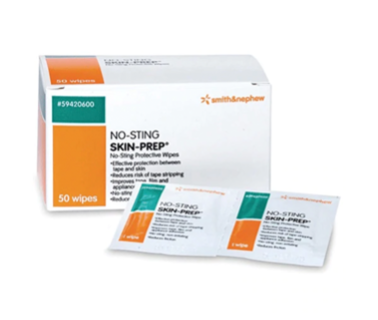 | -Provides barrier protection | - Comes in wipes or liquid - Not as strong as Skin Tac or Mastisol |
Skin Tactm(Torbot) 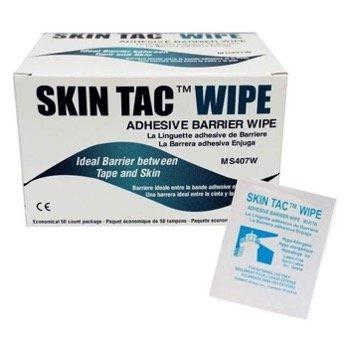 | - Provides barrier protection - Higher adhesive properties than Skin Prep - Latex-free, hypoallergenic, nonrubber adhesive | - Comes in wipes or liquid - Consider use of reciprocal removal product - Tac Away - May cause irritation for sensitive skin |
Mastisol® Liquid Adhesive (Eloquest) 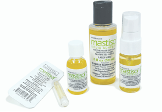 | - Higher adhesive properties than Skin Prep or Skin Tac - Can be used when other adhesive products have failed | - Comes in liquid, swabs, or single use vials - Consider use of reciprocal removal product - Detachol - More likely to cause sensitive skin irritation |
Adhesive Patches or Tapes
Additional adhesive patches or tape can be applied over the sensor adhesive patch1,2. Suggestions when using adhesive patches or tapes are to:
- Cut a hole in the adhesive patch or tape to fit over transmitter
- Cut the adhesive patch or tape into strips to use ‘‘picture frame’’ technique around sensor adhesive patch1,3
Product | Advantages | Professional tips |
IV3000 (Smith&Nephew) 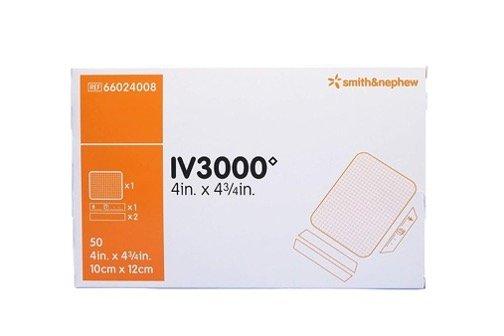 | - Thin transparent film - May cause fewer reactions than Tegaderm | - May also be used as a barrier when placed under sensor tape - Not breathable, may peel with sweating or if water gets under |
Tegaderm HP (HP stands for ‘‘Holding Power’’) 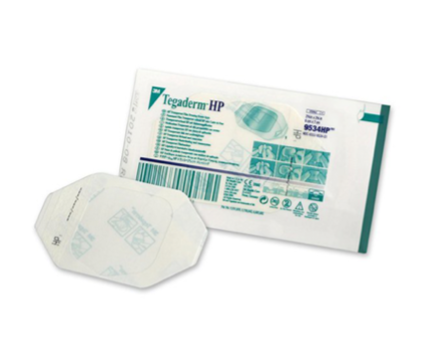 | - Thin transparent film - May adhere more strongly than standard Tegaderm | - May cause more irritation than IV3000 - Not breathable, may peel with sweating or if water gets under |
Hypafix®  | - Thicker, fabric-like adhesive than transparent films - Can be cut to size - Excellent adhesion even when wet | - Excellent staying power and thickness - May cause less trauma to skin upon removal2 |
Opsite™/Opsite Flexifit™ (Smith&Nephew) 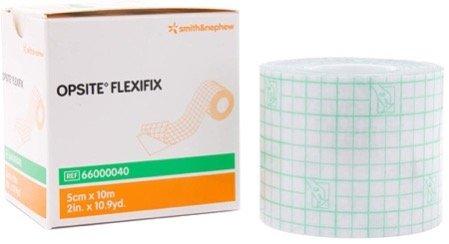 | - Breathable, transparent film with moderate permeability | - Can come as precut patches or in a roll |
Blenderm™ (3M)  | - Clear plastic hypoallergenic tape | - Comes in a tape roll, best used as a supplement to counteract peeling patch |
Transpore™ Surgical Tape  | - Clear, porous, plastic hypoallergenic tape | - Comes in a tape roll, best used as a supplement to counteract peeling patch |
Kinesiology tape:
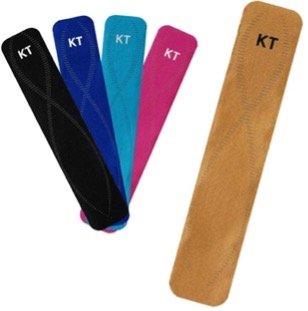 | - Comes in a roll for custom cutting - Gentle on skin with mild stretch | - Similar material to RockaDex and GrifGrips |
Cloth-like patches:
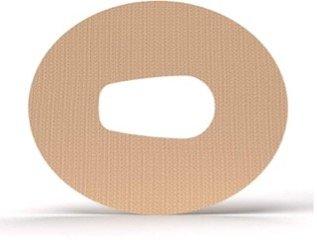 | - Precut for CGM - Flexible and breathable - Excellent adhesion even when wet - Bright colors and shapes | - Similar materials to kinesiology tapes and may be stretched or cut to fit a variety of devices and body shapes |
Nonadhesive wraps:
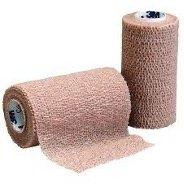 | - If you are unable to tolerate additional adhesive, wraps may help keep your sensor in place | - Wrap loosely, do not compress skin with elastic wraps - Remove during nighttime to avoid tissue compression - Consider for short-term use—during sports, activity, etc. |
*This paper was based on: Messer L. , & Beatson C., Preserving Skin Integrity with Chronic Diabetes Technology & Therapeutics Volume 20, Supplement 2, 2018.
1. Chase HP, Messer L: Understanding Insulin Pumps and Continuous Glucose Monitors. 3rd ed. Denver: Children’s Diabetes Research Foundation, 2016.
2. Englert K, Ruedy K, Coffey J, et al.: Skin and adhesive issues with continuous glucose monitors: a sticky situation. J Diabetes Sci Technol 2014;8:745–751.
3. Ives B, Sikes K, Urban A, et al.: Practical aspects of realtime continuous glucose monitors: the experience of the Yale Children’s Diabetes Program. Diabetes Educ 2010;36: 53–62.
1. Chase HP, Messer L: Understanding Insulin Pumps and Continuous Glucose Monitors. 3rd ed. Denver: Children’s Diabetes Research Foundation, 2016.
2. Englert K, Ruedy K, Coffey J, et al.: Skin and adhesive issues with continuous glucose monitors: a sticky situation. J Diabetes Sci Technol 2014;8:745–751.
3. Ives B, Sikes K, Urban A, et al.: Practical aspects of realtime continuous glucose monitors: the experience of the Yale Children’s Diabetes Program. Diabetes Educ 2010;36: 53–62.
BRIEF SAFETY STATEMENT: Failure to use the Dexcom Continuous Glucose Monitoring System and its components according to the instructions for use provided with your device and available at https://www.dexcom.com/safety-information and to properly consider all indications, contraindications, warnings, precautions, and cautions in those instructions for use may result in you missing a severe hypoglycemia (low blood glucose) or hyperglycemia (high blood glucose) occurrence and/or making a treatment decision that may result in injury. If your glucose alerts and readings from the Dexcom CGM do not match symptoms, use a blood glucose meter to make diabetes treatment decisions. Seek medical advice and attention when appropriate, including for any medical emergency.
MAT-2894
Related articles
How do I properly remove the Dexcom sensor adhesive?
Do you find it painful removing the sensor adhesive? Is there a sticky residue left behind on your skin? These techniques and products may help. Remember that what works best for one person may not work best for everyone. You may need to try several different products or methods to figure out what works best for you.
How do I properly remove the Dexcom sensor adhesive?
Do you find it painful removing the sensor adhesive? Is there a sticky residue left behind on your skin? These techniques and products may help. Remember that what works best for one person may not work best for everyone. You may need to try several different products or methods to figure out what works best for you.
How to treat irritated skin or rash from Dexcom adhesive?
Learn about professional tips on how to treat irritated skin or rash caused by Dexcom sensor adhesive, from cleaning the area to using barrier films and steroid cream.
How do I keep my sensor on for the full 10-day wear?
From placement to overpatch options, these Dexcom G6 adhesive patch tips show you how to keep your sensor on for the full 10-day wear without issues.
